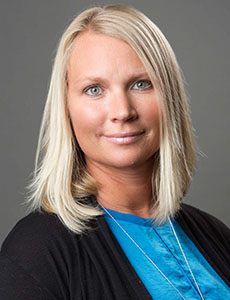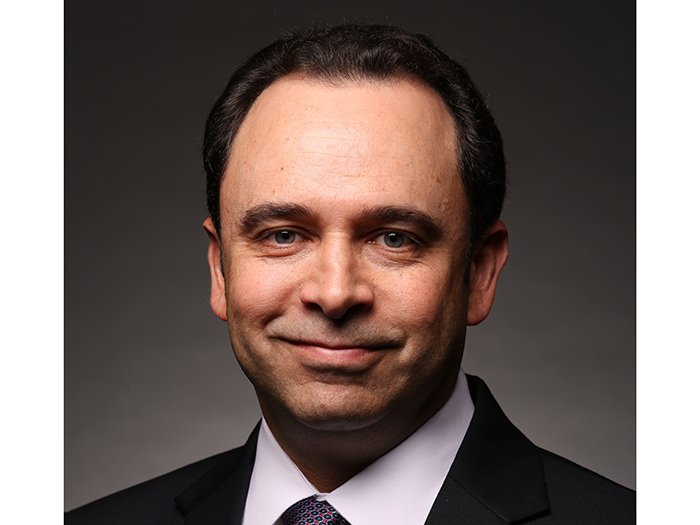A 40-Foot Fall, a Brain Injury and Broken Bones: One Worker’s Journey Back to His Life of Adventure

For a former professional mogul skier, scuba diver, jet skier, and entrepreneur, a life without excitement was not an option.
Michael Rombach owned a ski shop in Colorado for awhile, traveled to Tahiti to snorkel, and dove the Great Barrier Reef. Eventually, he moved to Florida, where he opened a roofing and coating company. There he continued to express his wild side by jet skiing in his free time.
A workplace injury would put all of this on hold, however.
During a routine visit to a job site, he fell 40 feet through a fiberglass roof and landed on a concrete floor. He lost consciousness and was left with body and brain injuries.
His traumatic brain injury left him non-verbal. It took him months to learn to speak again.
For many people, an injury this severe would put their life of adventure on hold. But Rombach still wanted to maintain his independence.
“He just wants to get up and do whatever he can. He wants to be as normal as he was before his injury,” said Amanda Knowlton, Network Manager for Paradigm’s Catastrophic Care Management division, RN, BA CCM.
Paradigm’s team, which specializes in working with catastrophic workers’ compensation cases, was on this case from the start, but Knowlton joined the effort a year after he was injured as a nurse case manager.
She has since helped get him into a semi-independent living facility, coordinated his maintenance program and helped him find a recreational therapy program.
“The main, major turning points are finding the facility where he can work to reach some independence, and then establishing the weekly program for him to keep him active and get him reintegrated into the community,” she said.
Knowlton Helps Him Get Back to Adventure
When Knowlton joined the case, Rombach was living at a post-acute rehabilitation facility. Before that, he was in a Center of Excellence in Colorado, and before that he was being treated at a hospital in Florida.
By the time Knowlton met him, he’d improved both medically and mentally. She decided it was time for him to experience some of the independence he craved.
“We were able to assess the situation, talk with his family, talk with the patient, and he was ready to move into a less restrictive environment,” she said.
“He still does need daily care for some activities of daily living, medication management, and being transported throughout the day, but we’ve been able to implement a weekly program for him that is most beneficial for his life.”
Knowlton helped find a facility that would be a good fit. To do that she communicated with both the Paradigm team and the worker’s guardian to determine what might be appropriate.
“I really take pride in actually taking ownership of driving to the different facilities, taking pictures of the room he’s going to be sleeping in, meeting with the staff, asking questions and asking what a day in the life of consists of once they go into the facility,” she said.
“The facility that I was able to locate was on a lake, a fishing lodge-like setting. He started off there, and now he lives in an apartment that’s coastal. He can see dolphins from his backyard.”
Knowlton also set up a maintenance program that fits both his medical needs and his interests. He goes to speech and recreational therapy twice a week and mental health therapy once a week.
At his recreational therapy sessions, he’s able to volunteer at both an aquarium and a primate sanctuary to help him reintegrate into a community. He helps with day-to-day maintenance and talks with guests at these sites.
At the sanctuary, he gets to prepare food for some of the animals. He’s even able to hand feed some of the smaller monkeys at the site.
Getting to Know Injured Workers as People, Not Just Patients
Part of why Knowlton’s work with Rombach has been so effective is that she prioritized having a personal connection with the worker and his family. Building relationships with patients is a huge part of a nurse case manager’s job.
“Getting to know them on a personal level and finding out what their hobbies were, what they enjoyed doing, it provides me with an opportunity to help them do something that they enjoy, whether it be like woodworking or working with animals,” she said.
“I try to get that information right when I first meet them and from their family, too.”
In this particular case, Knowlton was able to connect with Rombach, who’s family is from Colorado, over his time owning a ski shop there. She had previously worked in Colorado as an emergency room nurse and they were able to bond over that, reminiscing about the state’s beautiful mountains.
“As they start to disclose some of the interests that they have, I try to share some of my personal experience with that, too,” she said.
Knowing a worker’s interests has made Knowlton a better advocate for their care. Rombach’s brain injury sometimes prevents him from being able to focus at appointments and he forgets to ask if he’s medically cleared to do certain activities.
By attending his appointments, Knowlton is able fill in the gaps.
“I ask, ‘Hey, can he go on a bike ride? Can he go scuba diving? Can he go snow skiing? Can he travel to Colorado, back to see family?’ So that we know medically he’s safe to go about with his normal life,” she said.
The ability to have a long-standing connection with injured workers and get to know their families is what makes this position so rewarding for Knowlton.
“When you feel appreciated by a family and a patient, that just really hits home,” she said. &











